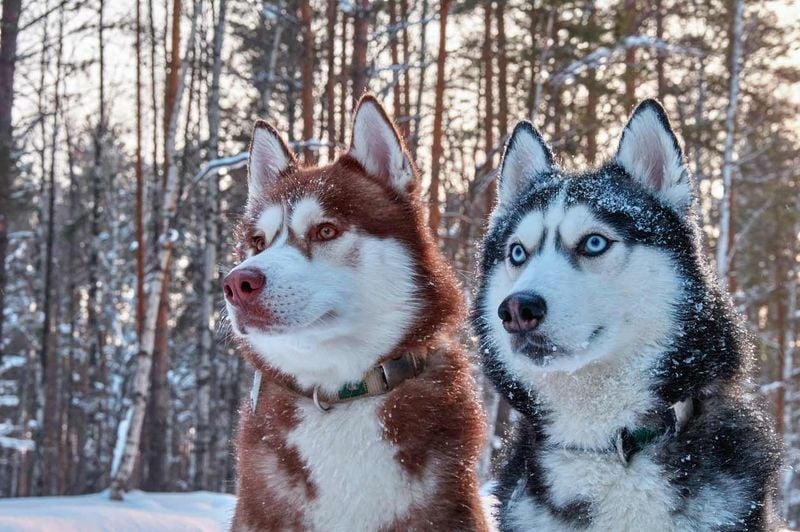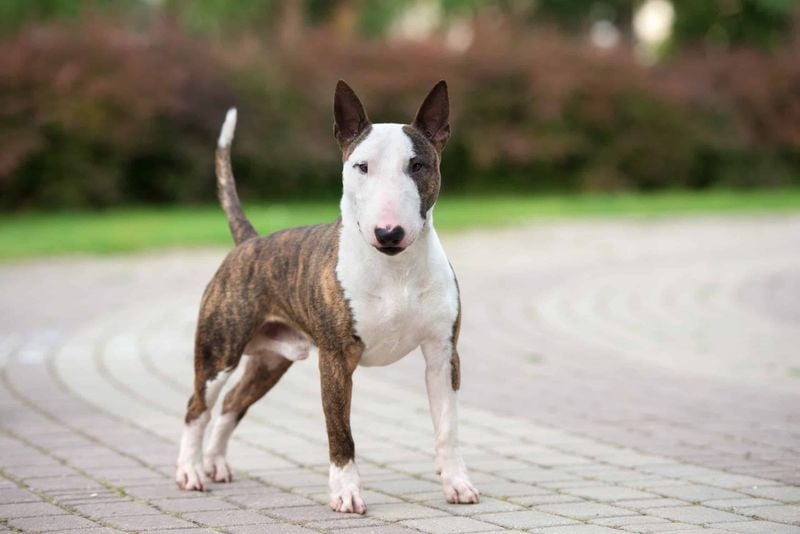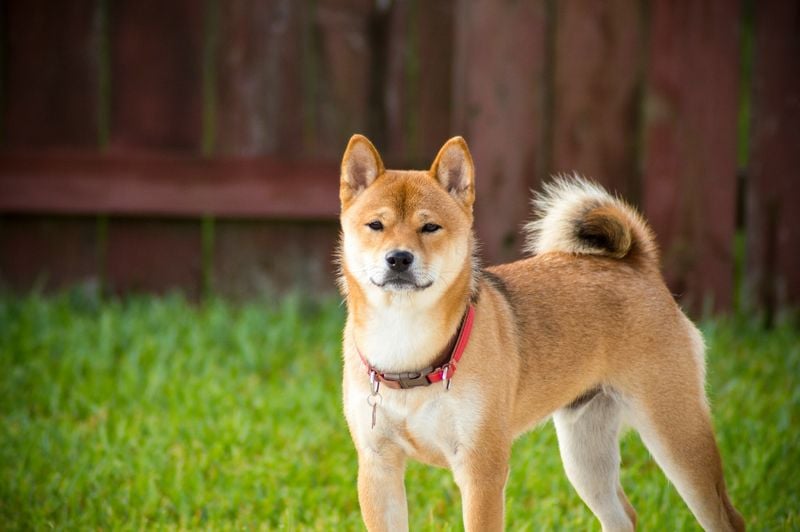The Sharpest Ears in the Dog World Belong to These 15 Breeds
Dogs have remarkable hearing abilities that far surpass our human ears. While we can detect sounds between 20 Hz and 20,000 Hz, dogs can hear frequencies as high as 65,000 Hz — more than three times our upper limit!
This extraordinary auditory skill helps them detect distant prey, sense approaching danger, and respond instantly to commands or cues we might miss entirely. Their ears are not just functional but also expressive, often giving us insight into their moods and alertness.
Among the many breeds in the canine world, some stand out for their exceptional hearing and sharply defined ears — traits that make them superb working dogs, highly alert watchdogs, and wonderfully attuned family companions.
Whether towering and pointed or compact and perky, these ears are always listening — and often downright adorable.
1. German Shepherd: The Ultimate Sound Detective
Born with radar-like hearing capabilities, German Shepherds can detect sounds four times farther away than humans. Their large, upright ears act like satellite dishes, constantly collecting and processing sound waves from their environment.
Military and police forces worldwide rely on these intelligent canines to locate hidden persons and detect approaching dangers long before electronic equipment can. Their ears move independently, allowing them to pinpoint exact sound locations with remarkable precision.
A German Shepherd’s hearing is so refined they can recognize their owner’s car engine from blocks away, often waiting at the door before you’ve even turned onto your street!
2. Belgian Malinois: Sound-Tracking Specialists
Renowned for their work alongside military special forces, Belgian Malinois possess extraordinary auditory processing abilities. Their triangular ears stand perpetually erect, rotating like miniature radar dishes to capture the faintest sounds.
These dogs can hear through walls, under rubble, and across impressive distances. Their ability to differentiate between relevant and irrelevant sounds makes them invaluable in search and rescue operations after natural disasters.
A fascinating trait of the Malinois is their capacity to hear high-frequency sounds that most other breeds miss entirely. This talent explains why they often appear to react to “nothing” – they’re actually responding to sounds beyond human perception!
3. Pembroke Welsh Corgi: Royal Listeners
Don’t let their short stature fool you – Pembroke Welsh Corgis pack impressive hearing into those prominent pointed ears! Originally bred as herding dogs, their exceptional sound detection helped them monitor scattered livestock across Welsh hillsides.
The unique shape and positioning of Corgi ears create natural sound funnels that amplify even the softest noises. Their ears contain more nerve endings than many larger breeds, allowing for enhanced sound discrimination and directional hearing.
Queen Elizabeth II famously trusted her Corgis as living alarm systems around Buckingham Palace. Their hearing is so sensitive they can detect a person’s footsteps from another floor of the house, making them surprisingly effective watchdogs despite their diminutive size.
4. Chihuahua: Tiny Dogs with Giant Hearing
Pound for pound, Chihuahuas might have the most powerful hearing of any canine. Their disproportionately large ears serve as exceptional sound-capturing instruments, giving these tiny guardians an auditory advantage that belies their size.
Chihuahuas can detect ultrasonic frequencies that larger dogs miss entirely. This evolutionary advantage likely developed as a survival mechanism, helping these small dogs avoid predators in their native Mexican wilderness.
Many Chihuahua owners report their pets responding to approaching visitors or delivery personnel long before doorbells ring. Their remarkable hearing combined with devoted loyalty makes them surprisingly effective alarm systems, despite weighing less than six pounds!
5. Siberian Husky: Arctic Sound Navigators
Siberian Huskies developed extraordinary hearing as survival tools in the harsh Arctic. Their triangular ears remain constantly mobile, rotating to capture sounds across snow-covered landscapes where visibility is often poor.
Unlike many breeds, Huskies can precisely locate sounds in three-dimensional space. This remarkable ability helped them navigate treacherous terrain and respond to commands from mushers during blizzards when visual cues disappeared.
Mushers report that experienced sled Huskies can hear the subtle sound of ice cracking beneath snow from remarkable distances. This early warning system protects entire teams from dangerous thin ice situations – just one example of how their exceptional hearing serves practical survival purposes.
6. Akita: Ancient Auditory Guardians
Revered in Japan for centuries, Akitas possess hearing capabilities that border on supernatural. Their thick, forward-facing ears might appear less impressive than some pointed varieties, but they conceal extraordinary sound-processing abilities refined through generations of guardian work.
Akitas can distinguish between familiar and unfamiliar footsteps even when the person is wearing different shoes. This remarkable sound discrimination made them perfect sentinels for Japanese nobility, as they could differentiate between household members and potential intruders.
A particularly impressive aspect of Akita hearing is their ability to detect subtle changes in human breathing patterns. Many owners of medical alert Akitas report their dogs alerting to oncoming seizures or blood sugar changes before medical devices register the change!
7. Australian Cattle Dog: Sonic Range Champions
Australian Cattle Dogs boast one of the widest hearing frequency ranges in the canine world. Their semi-erect ears might not look as dramatic as fully upright varieties, but they capture an astonishing spectrum of sounds from the lowest rumbles to the highest squeaks.
Ranchers prize these dogs for their ability to hear cattle movements from extraordinary distances. Their ears contain specialized muscles that allow continuous fine-tuning adjustments, helping them track moving sound sources with pinpoint accuracy.
A fascinating quirk of Cattle Dog hearing is their ability to filter out wind noise – a critical adaptation for working in the gusty Australian outback. This selective hearing helps them focus on important sounds like cattle movements or owner commands even during blustery conditions.
8. Basenji: Africa’s Sound-Tracking Specialists
Known as Africa’s “barkless dog,” Basenjis compensate for their unusual vocal cords with extraordinary hearing abilities. Their distinctive wrinkled foreheads and mobile, high-set ears form natural sound-collecting structures that amplify even the faintest noises.
Hunters in the Congo Basin relied on Basenjis to track prey through dense forest where visibility was limited. Their remarkable directional hearing allowed them to follow sounds of movement through thick vegetation, leading hunters to game that would otherwise remain hidden.
Basenji ears contain an unusually high concentration of nerve endings, making them exceptionally sensitive to high-frequency sounds. This adaptation helps them detect small prey animals and possibly even the ultrasonic communications of certain insects – a hunting advantage in their native African habitats.
9. West Highland White Terrier: Subterranean Sound Experts
Westies developed extraordinary hearing as specialized ratting dogs in Scotland. Their small, pointed ears might look cute and perky, but they’re actually sophisticated sound-detecting instruments that can pick up the tiniest rodent movements underground.
Scottish farmers valued Westies for their ability to hear rats and mice moving inside walls or under floorboards. Their ears contain specialized cartilage that enhances their ability to detect high-frequency sounds typical of rodent communications.
A remarkable feature of Westie hearing is their ability to filter out background noise and focus on specific sound sources. This selective hearing helps explain why your Westie might sleep soundly through thunderstorms but wake instantly at the sound of a treat bag opening in another room!
10. Papillon: Butterfly Ears With Supersonic Powers
Papillons earned their name from butterfly-like ears, but these decorative features are actually powerful sound-collecting instruments. The large surface area and unique shape create natural amplifiers that enhance their already impressive hearing range.
These tiny dogs can detect sounds at frequencies up to 65,000 Hz – well beyond the range of most other breeds. This sensitivity to ultrasonic sounds made them excellent vermin hunters in European royal courts, where they could hear mice moving behind walls.
Papillon ears contain an unusually high density of nerve endings that connect directly to specialized auditory processing centers in their brains. This biological advantage explains why Papillons often respond to sounds before larger dogs notice anything unusual – they’re literally hearing things other dogs can’t!
11. Bull Terrier: Unexpected Auditory Champions
Behind their distinctive egg-shaped heads, Bull Terriers hide surprisingly sophisticated hearing abilities. Their small, upright ears might look less impressive than some breeds, but they’re remarkably efficient sound collectors.
Originally bred for vermin control and later for fighting, Bull Terriers developed the ability to hear high-frequency sounds that signaled prey movements. Modern Bull Terriers retain this exceptional hearing range, making them more sensitive to environmental sounds than their tough appearance might suggest.
A unique aspect of Bull Terrier hearing is their remarkable sound localization ability. They can pinpoint the exact source of sounds with greater accuracy than many breeds with larger ears, a talent that continues to serve them well as protective family companions.
12. Shiba Inu: Ancient Auditory Hunters
Japan’s beloved Shiba Inus possess hearing capabilities refined through thousands of years of hunting in dense mountain forests. Their triangular, forward-facing ears might look adorably fox-like, but they’re sophisticated sound-tracking instruments.
Shibas can detect and precisely locate sounds from remarkable distances. This talent evolved as they hunted small game through mountainous terrain where visual tracking was often impossible due to thick vegetation.
A fascinating aspect of Shiba hearing is their ability to distinguish between similar sounds. They can differentiate between the movements of various small animals, helping them identify preferred prey. This selective hearing explains why your Shiba might ignore loud traffic but suddenly become alert at the barely perceptible sound of a squirrel moving through your backyard!
13. French Bulldog: Radar Ears in Compact Form
French Bulldogs might be known for their distinctive bat-shaped ears, but these adorable features are actually sophisticated sound-collecting structures. Their upright position and wide surface area create natural funnels that capture and amplify sounds from their environment.
Despite their companion dog status today, Frenchies were originally ratting dogs in Paris workshops. Their exceptional hearing helped them detect rodents moving inside walls and under floorboards – talents many modern Frenchies still demonstrate when they suddenly alert to sounds humans can’t perceive.
An interesting feature of French Bulldog hearing is their sensitivity to emotional tones in human voices. Their ears can detect subtle changes in vocal pitch that signal different emotions, contributing to their reputation as emotionally intuitive companions.
14. Rat Terrier: Ultrasonic Rodent Detectors
Rat Terriers earned their name through exceptional rodent-hunting abilities powered by extraordinary hearing. Their V-shaped ears can swivel independently to locate the source of even the faintest squeaks or scratches.
American farmers depended on these small but mighty hunters to protect grain stores from rodents. Their ears are specially tuned to detect the high-frequency sounds of rodent communication – sounds that fall outside human hearing range entirely.
A remarkable feature of Rat Terrier hearing is their ability to detect ultrasonic rodent vocalizations from inside walls, under floors, and behind appliances. This talent made them invaluable working dogs on farms and continues to make them excellent vermin controllers in modern homes.
15. Ibizan Hound: Desert Sound Trackers
Sporting perhaps the most dramatic ears in the canine world, Ibizan Hounds developed their extraordinary hearing as sight-and-sound hunters in the rocky terrain of Spain’s Balearic Islands. Their massive, highly mobile ears function as sound-capturing radar dishes that can rotate independently to triangulate prey locations.
Traditional hunters valued these dogs for their ability to track rabbits through dense brush where visual tracking was impossible. Their ears can detect the softest rustling of small animals from distances that seem impossible to human hunters.
Ibizan Hounds demonstrate remarkable sound discrimination abilities, filtering out background noise to focus on relevant sounds. This talent explains why they might seem oblivious to household chaos but instantly alert to the quiet movement of a squirrel outside your window!


















